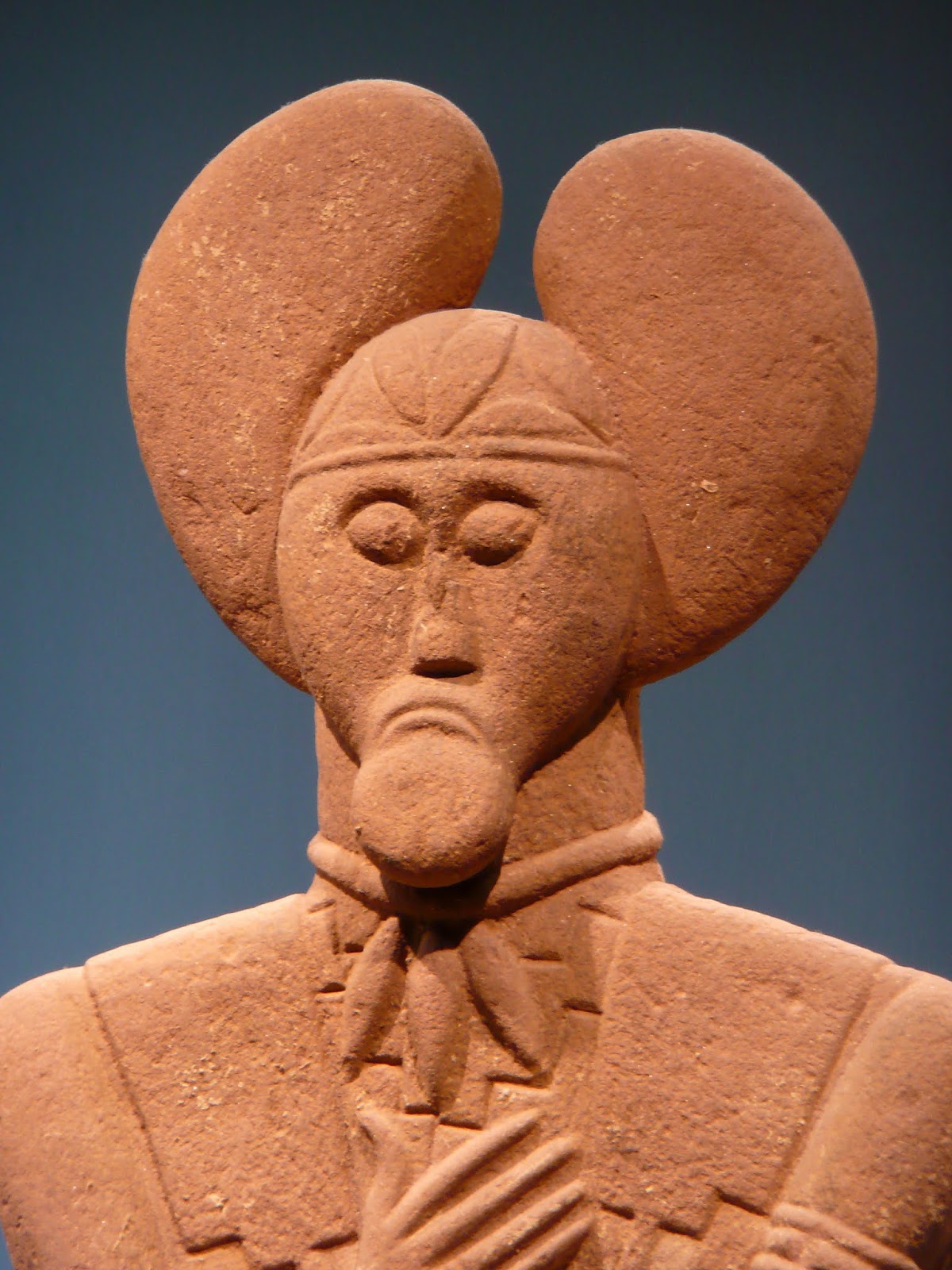The "Prince of Glauberg" 500 BCE
"Much international attention was attracted especially by the discovery of an extremely rare find, a life-sized sandstone statue or stele, dating from the 5th century BC, which was found just outside the larger tumulus. The stele, fully preserved except for its feet, depicts an armed male warrior. It measures 186 cm in height and weighs 230 kg. It is made from a type of sandstone available within a few kilometres of Glauberg. Much detail is clearly visible: his trousers, composite armour tunic, wooden shield and a typical La Tène sword hanging from his right side. The moustachioed man wears a torc with three pendants, remarkably similar to the one from the chamber in mound 1, several rings on both arms and one on the right hand. On his head, he wears a "leaf crown", or hood-like headdress crowned by two protrusions, resembling the shape of mistletoe leaves. Such headdresses are also known from a handful of contemporary sculptures, and coins. As mistletoe is believed to have held a magical or religious significance to the Celts, it could indicate that the warrior depicted also played the role of a priest. Fragments of three similar statues were also discovered in the area. It is suggested that all four statues once stood in the rectangular enclosure. Perhaps they were associated with an ancestor cult."
-taken from Wikipedia
 |
| The "Prince of Glauberg" 500 BCE. |
Source:
https://en.wikipedia.org/wiki/File:Keltenf%C3%BCrst_Glauberg_vorne_5.JPG
https://en.wikipedia.org/wiki/File:Keltenf%C3%BCrst_Glauberg_vorne_rechts_1.JPG
https://news.cision.com/frankfurt-rhine-main-region/i/celtic-statue-glauburg,c2080818
https://www.flickr.com/photos/oar/9597274705
Quote:
https://en.wikipedia.org/wiki/Glauberg#%22Princely%22_burial_mounds





Comments
Post a Comment